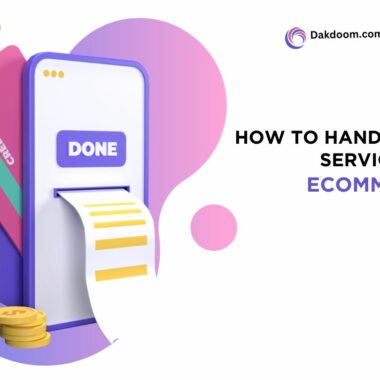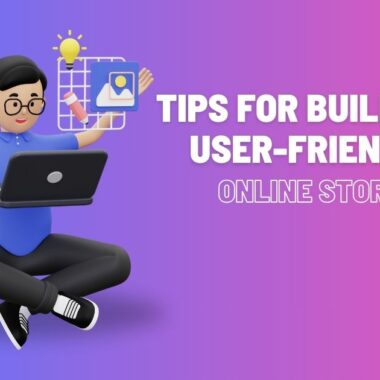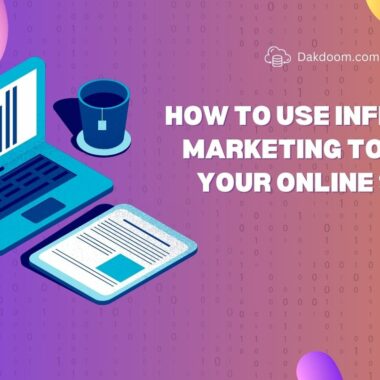The Importance of Mobile Optimization for Your eCommerce Store
In today’s digital age, mobile optimization is no longer a luxury but a necessity for eCommerce success. With a growing number of consumers shopping on their smartphones and tablets, ensuring that your online store is mobile-friendly can make or break your business. At Dakdoom, we understand the critical role that mobile optimization plays in enhancing user experience and driving sales. Here’s why mobile optimization should be at the forefront of your eCommerce strategy:
1. Growing Mobile Traffic
Recent statistics show that over 50% of global web traffic now comes from mobile devices. This trend is only expected to grow, making it imperative for eCommerce stores to cater to mobile users. If your site isn’t optimized for mobile, you risk alienating a large segment of potential customers who might find your site hard to navigate or slow to load.
2. Enhanced User Experience
A mobile-optimized site ensures that your customers have a seamless and enjoyable shopping experience. Responsive design adapts your website’s layout and content to fit various screen sizes, making it easier for users to browse, search, and make purchases. A positive user experience can lead to higher customer satisfaction and increased repeat business.
3. Faster Load Times
Mobile users expect quick access to information. A slow-loading site can lead to frustration and increased bounce rates. Mobile optimization techniques, such as image compression and streamlined code, can significantly improve load times, keeping users engaged and reducing the likelihood of them abandoning their shopping carts.
4. Improved Search Engine Rankings
Search engines like Google prioritize mobile-friendly websites in their rankings. A mobile-optimized site is more likely to appear higher in search results, driving more organic traffic to your eCommerce store. Investing in mobile optimization can thus enhance your visibility and attract more potential customers.
5. Increased Conversion Rates
An optimized mobile experience can directly impact your conversion rates. Features like easy navigation, clear call-to-action buttons, and simplified checkout processes can lead to higher sales. Mobile users are more likely to complete transactions if they find the process smooth and efficient.
6. Competitive Advantage
In a competitive eCommerce landscape, standing out is crucial. A mobile-optimized site not only meets user expectations but also sets you apart from competitors who may not prioritize mobile friendliness. Offering a superior mobile experience can give you a significant edge in the market.
7. Better Analytics and Insights
Mobile optimization often involves integrating analytics tools that provide valuable insights into user behavior. Understanding how mobile users interact with your site can help you make informed decisions about design improvements and marketing strategies.
8.Streamlined Checkout Process
A complicated checkout process is one of the biggest barriers to conversion on mobile devices. Simplifying this process is crucial. Implement features like auto-fill options, easy-to-use payment gateways, and minimal form fields. Consider offering guest checkout options to speed up the buying process and reduce cart abandonment.
9. Touch-Friendly Navigation
Mobile users interact with websites using touch screens, so navigation elements should be touch-friendly. Ensure buttons are adequately sized and spaced to avoid accidental clicks. Implement gestures like swiping and tapping for a more intuitive browsing experience.
10. Optimized Images and Media
High-resolution images are essential for showcasing products, but they can significantly impact load times on mobile devices. Use responsive image techniques to serve appropriately sized images based on the user’s device. Consider using modern image formats like WebP that offer high quality with reduced file sizes. Also, optimize videos to ensure they play smoothly on mobile devices without causing delays.
11. Mobile-First Design Approach
A mobile-first design approach involves designing your site primarily for mobile devices before adapting it for larger screens. This approach ensures that the core features and content are prioritized for mobile users, which can result in a more efficient and user-focused experience. Responsive design should then adapt these features for desktop and tablet users.
12. Local Optimization
Many mobile users search for local businesses or services while on the go. Ensure that your eCommerce store is optimized for local SEO by including location-specific keywords, creating localized content, and setting up Google My Business profiles. This can help attract local customers who are searching for products in your area.
13. Voice Search Optimization
With the rise of voice assistants like Siri, Google Assistant, and Alexa, optimizing for voice search is becoming increasingly important. Voice searches are often phrased as questions, so incorporating conversational keywords and phrases into your content can improve your visibility in voice search results.
14. Security and Trust Signals
Mobile users are particularly sensitive to security concerns, especially when making purchases. Ensure that your site uses HTTPS to encrypt user data and display trust signals like security badges and privacy policies. These measures help build trust and reassure users that their personal information is safe.
15. Regular Testing and Updates
Mobile devices and operating systems are constantly evolving, which means that regular testing and updates are crucial to maintaining optimal performance. Continuously test your site on various devices and browsers to identify and address any issues. Keep your mobile optimization strategies up-to-date with the latest technologies and user trends.
16. Accessibility Considerations
Making your eCommerce store accessible to all users, including those with disabilities, is an important aspect of mobile optimization. Implement features like screen reader compatibility, alternative text for images, and easy-to-read fonts. Ensuring your site is accessible not only broadens your audience but also demonstrates your commitment to inclusivity.
Implementing Mobile Optimization: A Practical Guide
To put these insights into action, start by assessing your current mobile performance. Use tools like Google’s Mobile-Friendly Test and Google Analytics to identify areas for improvement. Collaborate with web developers and designers to create a mobile-optimized strategy that aligns with your business goals.
Regularly review your mobile performance metrics and user feedback to refine your approach and stay ahead of the competition. At Dakdoom, we offer tailored solutions to help you achieve a seamless mobile experience for your customers.
Final Thoughts
In an increasingly mobile world, optimizing your eCommerce store for mobile devices is essential for attracting and retaining customers. By focusing on mobile-friendly design, fast load times, and a streamlined shopping experience, you can enhance customer satisfaction and drive higher conversion rates. At Dakdoom, we’re here to support you in optimizing every aspect of your mobile strategy for success.
For more personalized advice on mobile optimization, get in touch with us at Dakdoom. We’re excited to help your eCommerce store thrive in the mobile-first era!
1. Understanding Mobile User Behavior
Mobile vs. Desktop Users:
- Behavioral Differences: Mobile users tend to have shorter attention spans and are often looking for quick information. They are also more likely to make impulse purchases compared to desktop users.
- Usage Context: Mobile users are frequently on the go, which means they expect fast access and convenience. Understanding this can help tailor your mobile design to meet their needs more effectively.
Optimizing for Mobile Preferences:
- Single-Column Layouts: Mobile screens are narrow, so a single-column layout often works better than multi-column designs. This format ensures that content is easy to read and navigate without excessive scrolling or zooming.
- Touch Gestures: Incorporate touch-friendly features like swipe gestures for image galleries or product carousels, which enhance the user experience on touch devices.
2. Technical Aspects of Mobile Optimization
Responsive Design:
- Fluid Grids: Use fluid grid layouts that automatically adjust based on screen size. This ensures your site’s elements resize and reposition correctly on different devices.
- Flexible Images: Implement responsive images that adjust their size based on the viewport. Use techniques like
srcsetto serve different image sizes for various devices.
Performance Optimization:
- Minimize HTTP Requests: Reduce the number of requests your mobile site makes to the server by combining files (CSS, JavaScript) and using techniques like lazy loading for images.
- Optimize Code: Compress and minify CSS and JavaScript files to decrease load times. Use asynchronous loading for non-essential scripts.
Progressive Web Apps (PWAs):
- Enhanced User Experience: PWAs offer a native app-like experience directly through the web browser, with features like offline access, push notifications, and faster load times.
- Installation: PWAs can be added to the home screen of mobile devices, giving users easy access and creating a more engaging experience.
3. Mobile Search and SEO
Mobile-First Indexing:
- Google’s Approach: Google primarily uses the mobile version of your site for indexing and ranking. This means your mobile site needs to be fully optimized to ensure good search visibility.
- Content and Metadata: Ensure that all important content, metadata, and structured data are available on your mobile site. This includes optimized titles, descriptions, and keywords.
Local SEO for Mobile:
- Local Searches: Mobile searches often have local intent. Optimize your content for local keywords and ensure your Google My Business profile is up-to-date.
- Location-Based Features: Implement features like store locators and geo-targeted promotions to attract local customers.
4. User Experience (UX) and Conversion Optimization
Simplified Navigation:
- Hamburger Menus: Use expandable hamburger menus to save space while keeping navigation accessible. Ensure menus are easy to open and close.
- Sticky Elements: Implement sticky headers or navigation bars that remain visible as users scroll, making it easier for them to access key sections of your site.
Form Optimization:
- Auto-Fill and Smart Defaults: Use auto-fill and smart default settings to make form completion quicker and more convenient for users.
- Minimize Input Fields: Reduce the number of fields required in forms. Only ask for essential information to streamline the checkout or sign-up process.
5. Analytics and Monitoring
Mobile Analytics Tools:
- Google Analytics: Use Google Analytics to track mobile-specific metrics such as bounce rate, average session duration, and conversion rates for mobile users.
- Heatmaps: Tools like Hotjar or Crazy Egg can provide heatmaps and user session recordings to understand how mobile users interact with your site.
A/B Testing:
- Test Variations: Conduct A/B testing on mobile-specific elements, such as call-to-action buttons, image placements, and form designs to determine what works best for mobile users.
- Iterate Based on Data: Use test results to make data-driven improvements to your mobile site.
6. Future Trends in Mobile Optimization
5G Technology:
- Faster Speeds: As 5G technology becomes more widespread, it will enable faster data transfer speeds. Ensure your site is prepared to leverage these advancements by optimizing for high-speed connections.
- Enhanced Experiences: Take advantage of 5G to offer more interactive and immersive experiences, such as augmented reality (AR) features.
AI and Personalization:
- AI Integration: Implement AI-driven features like chatbots and personalized recommendations to enhance user engagement and support on mobile devices.
- Behavioral Insights: Use AI to analyze mobile user behavior and tailor content and offers based on individual preferences and browsing history.
Conclusion
Mobile optimization is a crucial aspect of modern eCommerce that impacts user experience, search engine rankings, and overall business performance. By understanding mobile user behavior, focusing on technical aspects, optimizing for search and conversion, and staying abreast of future trends, you can create a compelling mobile experience that drives growth and enhances customer satisfaction.
At Dakdoom, we are committed to helping you navigate the complexities of mobile optimization and implementing strategies that align with your business goals. Contact us today to get started on transforming your eCommerce store into a mobile-friendly powerhouse.












